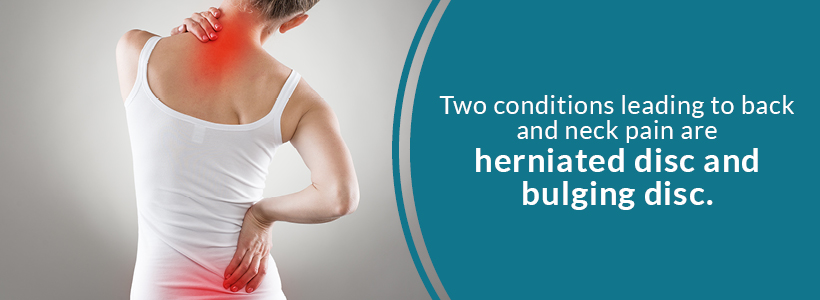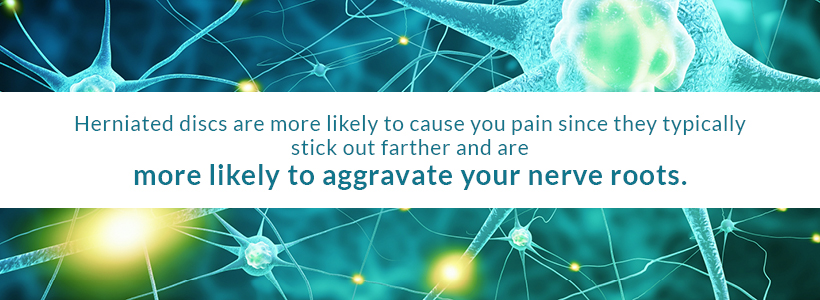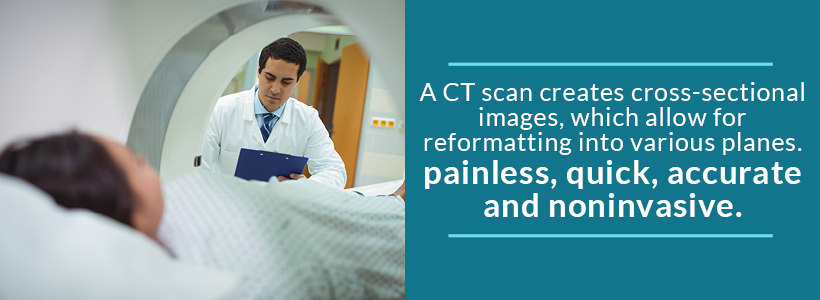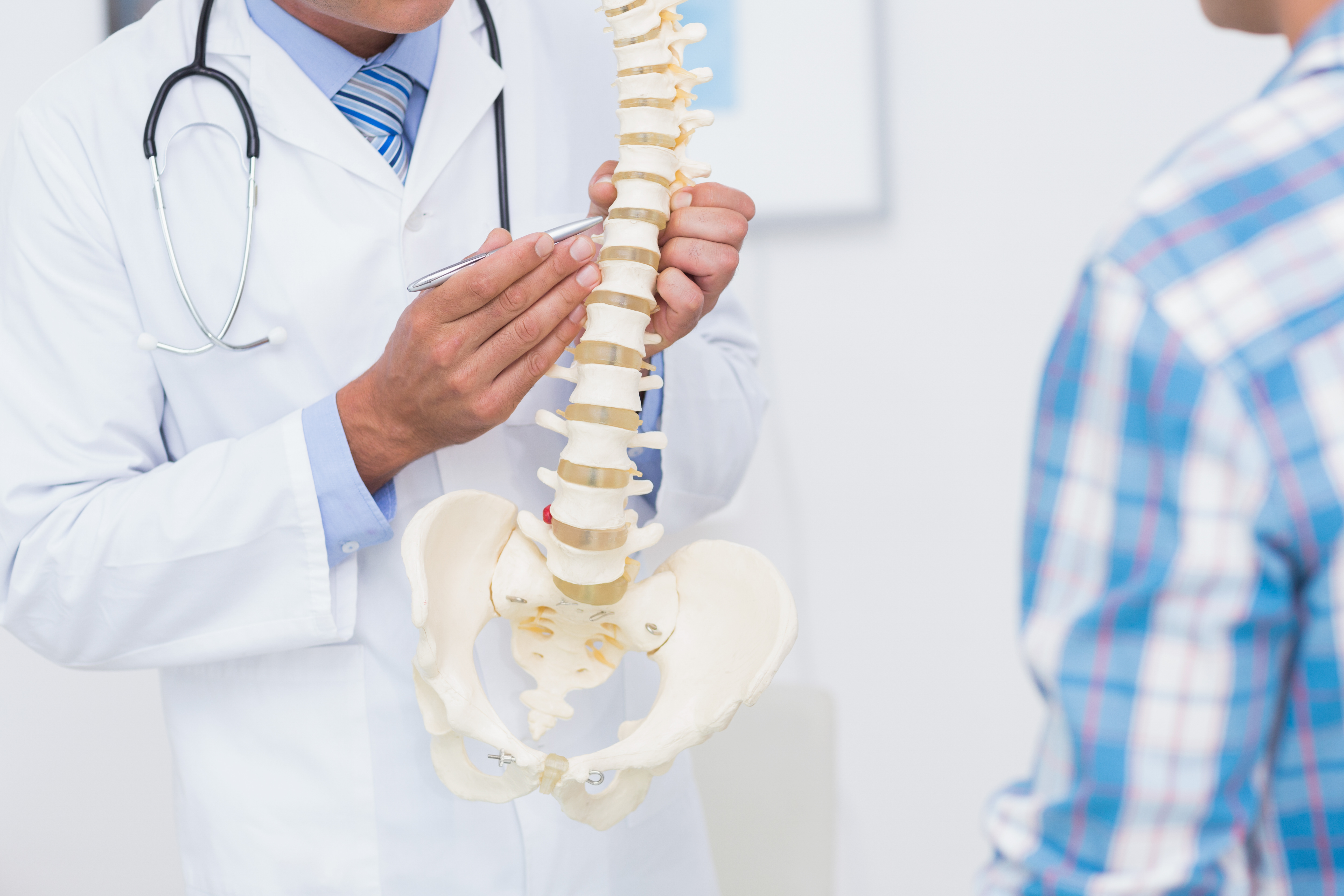What is Facet Nerve Ablation? Those who are seeking degenerative disc disease treatments have probably come across facet nerve ablation in their searches. But, is this an effective method of treating your degenerative disc disease…
You have a series of bones, called vertebrae making up your spinal column. These are all stacked on one another. From the top down, your spine includes:
- Seven cervical spine bones
- Twelve thoracic spine bones
- Five lumbar spine bones
- A sacrum bone
- A coccyx bone (at the base)
Discs cushion these bones and protect them by absorbing the shocks that day-to-day activities — like walking, twisting and lifting — can cause. When the bones, discs, muscles, tendons and nerves in and surrounding your spinal column are working as they should, you may not think about your spine, neck or back often. They’re just a part of your anatomy. You know your spine keeps you upright, but that’s about all the attention you give it — unless you’re in pain.
Once confronted with pain, though, all your focus is likely on relief, and you seek a doctor’s help to examine your vertebrae and discs, diagnose what’s wrong and get treated.
Two conditions leading to back and neck pain are herniated disc and a bulging disc. People often use these terms interchangeably, but in reality, they are different. Learning about the differences between the two could be extremely beneficial to you if you or a loved one is suffering from one of these conditions.

How Do Bulging Discs and Herniated Discs Differ?
A primary distinction between a herniated disc and a bulging disc is:
- Bulging discs are “contained.” There is no rupture or tear present inside the disc’s outer layer. There’s a small “bubble” distending into your spinal canal.
- Herniated discs are “non-contained.” There is a rupture or tear present. You have a section of the nucleus pulposus leaking into your spinal canal. Herniated discs may start out as bulging discs, but they create so much pressure on your disc’s outer wall, it causes a rupture.
A Bulging Disc
As its name implies, a bulging disc refers to a protruding disc, and it may occur in any section of the disc. Occasionally, the whole perimeter of a bulging disc protrudes. When you have a bulging disc, you don’t always have symptoms. Many people often have them and don’t even realize it.
Often, but not always, a lack of symptoms is a key distinction between a bulging disc and herniated disc. But, although there usually aren’t any symptoms, some people may experience:
- Pain — in the back, arm, leg or foot
- Sensory — pins and needles, leg numbness or uncomfortable burning and tingling
- Muscular — muscle spasms, muscle weakness or overactive reflexes
Other common symptoms include stiff neck, foot numbness and hand numbness.
Bulging discs don’t always affect the disc’s entire perimeter. However, around a quarter to a half of its circumference is typically impacted, but only the tough cartilage of the outer layer is involved.
A Herniated Disc
Herniated discs are discs where the outer layer cracks and agitates the inner layer space. A herniated disc is more susceptible to pinching your spinal cord and “slipping” into your spinal canal. When this occurs, you may experience some or all of these symptoms in your extremities and spine:
- Weakness
- Pain
- Numbness
- Tingling
- Burning
In many situations, these symptoms can be severe enough where you’ll need to see a spine specialist. Radiological studies, such as MRI scans and X-rays, in addition to a physical exam, provide your doctor with evidence of how bad your disc has herniated and which treatment would eliminate your symptoms most effectively.
With age, discs can show signs of wear and tear. As time progresses, the disc’s cartilage may stiffen as it becomes less lubricated and dehydrated. Changes like this may cause the disc’s outer layer to bulge out around its entire circumference fairly evenly.
Herniated discs occur when the tough cartilage outer layer has a crack allowing some of the disc’s soft inner cartilage to stick out. It can be a small affected area where the crack is, and not the entire disc.
Herniated discs, when you compare them with bulging discs, are more likely to cause you pain since they typically stick out farther and are more likely to aggravate your nerve roots. Nerve compression can cause irritation, and, more commonly, the herniation may cause painful nerve root inflammation.
Imaging tests may show you have a herniated disc — however, it may not be what’s causing your pain. Some individuals have herniated discs and experience no pain.

Causes of Bulging Discs
A spinal disc absorbs a great deal of wear and tear, and begins to weaken and degenerate over time. The most common condition leading to a bulging disc is degenerative disease, which often results in spinal osteoarthritis. Degenerative disc disease isn’t strictly a disease — it’s the term used to describe pain from a disc that degenerates over time. Along with this, other contributors to bulging discs include:
- Smoking
- Injury or strain
- Obesity
- Inactivity
- Poor posture
Causes of Herniated Discs
A herniated disc, also called slipped disc, occurs when its outer ring tears or becomes weak allowing the inner section to slip out. Contributing factors to herniated discs include:
- Age
- Lifting heavy objects
- Being overweight
- Having weak muscles
- Having a sedentary lifestyle
As you age, you’re also more vulnerable to a herniated disc since getting older causes your discs to start losing their protective water content. This makes it easier for them to slip out of place.
Herniated disks are also caused by certain movements. For example, you may slip a disc by lifting an object. Lifting a heavy, large object can strain your lower back and lead to a herniated disc. If your job is physically demanding where you’re doing a lot of lifting, your risk of a herniated disc increases.
Being overweight also increases your risk since your spinal discs have to support your extra weight. A sedentary lifestyle and weak muscles can cause a slipped disc as well.
Herniated discs are also less common in women than men.

Complications of Both
Of course, both a bulging disc and a herniated disc can produce complications when not treated.
Untreated Herniated Disc
A severe, untreated herniated disc may cause permanent nerve damage. In extremely rare cases, you could experience a loss of bladder or bowel control as a result of a herniated disc cutting off impulses to your cauda equina nerves located in your legs and lower back.
Saddle anesthesia is another long-term complication. With this complication, your herniated disc compresses nerves causing you to lose sensation in the back of your legs, inner thighs and around your rectum.
Although herniated disc symptoms could improve, they could also get worse. If you find you’re unable to engage in the activities you once could, set up an appointment with your doctor.
Untreated Bulging Disc
Usually, if your bulging disc is uncomplicated, you can live a normal and active life without having to make special accommodations for this condition. You will likely have a good outcome with treatment or without.
When a bulging disc turns into a herniated disc, however, you should seek treatment. Some exceptions to a good outcome occur when you have an extremely large disc bulge or an unusually small spinal canal.
In vulnerable people, even a bulging disc may take up enough space in the spinal canal to generate stenosis — which means a body channel is abnormally narrowing. When this happens, your doctor may have to relieve your spinal nerve pressure. Certain bulging disc symptoms occur when you have stenosis. These symptoms include:
- Weakness or numbness in your legs (one or both)
- Pain radiating into your legs
These signs are signals you require further evaluation and treatment. Other serious complications, such as loss of normal bladder or bowel function, would suggest you have severe nerve compression and require immediate surgical evaluation.

Diagnosing Herniated Discs and Bulging Discs
To diagnose a herniated or bulging disc, your doctor will first give you a physical examination. They’ll look for where your discomfort and pain are stemming from by checking your muscle strength, nerve function and if you experience pain when they touch or move the affected area. They’ll also inquire about your symptoms and medical history.
To view your spine muscles and bones and identify damaged areas, your physician will likely use imaging tests Some imaging tests may include:
- Spinal X-rays
- Computed tomography scans (CAT scan or CT scan)
- Magnetic resonance imaging (MRI) scans
- Discograms
Your doctor could even combine any or all of these tools to gather information on what’s causing your weakness, pain or discomfort.
Let’s take a closer look at these tools.
Spinal X-Rays
X-rays use external radiation to create images of your body and internal structures like your organs for diagnostic purposes. X-rays pass through the tissues of your body onto camera film-like plates, which generate a picture. X-rays use digital media and computers mostly instead of film.
Spinal X-rays help the doctor evaluate any area of your spine. Images of your neck, spine or back will help the doctor diagnose different reasons for your pain such as:
- Arthritis
- Broken bones or fractures
- Spondylolisthesis
- Tumors
- Degeneration of discs
- Scoliosis or kyphosis
- Congenital abnormalities
There are multiple reasons your doctor would suggest having a spinal X-ray done.
Computed Tomography (CT) Scans
A CT scan of your spine is another type of diagnostic imaging test your doctor would use to help them rule out or diagnose spinal column damage. Similar to X-rays, this device generates multiple pictures or images of the inside of your body.
The CT scan creates cross-sectional images, which allow for reformatting into various planes. CT scans, which can create 3D images, are painless, quick, accurate and noninvasive.
Magnetic Resonance Imaging Scans (MRI)
An MRI of your spine uses a magnetic field, radio waves and a computer to generate detailed images of your spine and surrounding tissues. It produces much more detailed and precise images than other imaging methods. An MRI of your spine shows your doctor your anatomy of your vertebrae, which makes up your spine, spinal cord, spaces between your vertebrae for passing nerves and discs and your ligaments keeping your vertebrae together.
Presently, an MRI is the most efficient and sensitive imaging tool of your spine. It doesn’t require gadolinium injections or ionizing radiation. Your doctor can use the detailed MRI images to evaluate different sections of your body to diagnose certain diseases.
Discograms
A discogram is a mildly invasive diagnostic test using X-rays to allow the doctor to examine your spine’s intervertebral discs. Your doctor will give you a unique dye in which they inject into a series of discs or one injured disc. The dye makes your disc noticeable on X-ray film or a fluoroscope monitor. Your doctor will use this test to identify which damaged discs are causing you pain.
The discogram shows the doctor if you have a ruptured disc or one with tears. It will also show your doctor if you need surgery.
How Do the Treatments of Each Condition Differ?
Both of these disc conditions and their symptoms are treated in various ways, and may include epidural injection for bulging disc treatments. Your doctor strives to diagnose the underlying cause of your back pain or any other symptoms you’re experiencing accurately to determine which treatment you need.
For instance, if your doctor were to provide you with certain herniated disc treatments for a lumbar herniated disc, it wouldn’t do you any good if the actual cause of your pain were a soft tissue injury or muscle strain. And this is especially important if surgery may be in the picture for you.
Typically, conservative treatments are used first for both.

Non-Surgical Treatments
A main symptom of both bulging and herniated discs is inflammation. By improving spinal alignment and reducing inflammation, many cases are resolved without the need for surgery. Some non-surgical treatments generally effective for disc issues include:
- Chiropractic treatment
- Physical therapy
- Heat and ice treatments
- Injections
- Oral medication
Additionally, you’re encouraged to makes some positive changes in your lifestyle for the long-term to reduce your risk of any future exacerbations. Some lifestyle changes could include quitting smoking, regular exercise and weight loss.
Surgery
If conservative treatments aren’t providing you with adequate pain relief, your doctor may recommend surgery for your herniated disc. You may have the option of minimally invasive spine surgery.
If a degenerative disc or herniated disc is the cause of your pain, spine surgery may ease it. Your doctor may suggest either one of these surgeries:
- Spinal fusion — This surgery fuses two or more vertebrae together to keep them from moving. The goal of this surgery is to eliminate the movement between bones to help ease pain. This surgery is especially common with degenerative disc disease.
- Microdiscectomy — In this surgery, the surgeon removes the herniated section of the disc.
Your doctor likely won’t recommend surgery if degenerative disc disease or herniated disc isn’t causing your pain, if surgery is for exploratory purposes or if you have chronic pain, but the doctor can’t identify its exact cause.
Getting Evaluated for a Bulging or Herniated Disk
Spinal terminology can often be hard to understand and is often used imprecisely. Herniated discs and bulging discs are two common examples. Since they are similar, patients often don’t know which one fits the symptoms they’re experiencing.
If you’re wondering whether you have a bulging disc or herniated disc or are looking for a second opinion, use our Treatment Matching Tool, then give us a call at Orthopedic & Laser Spine Surgery for an evaluation and to learn about your minimally invasive treatment options.

